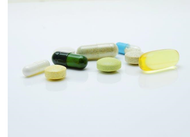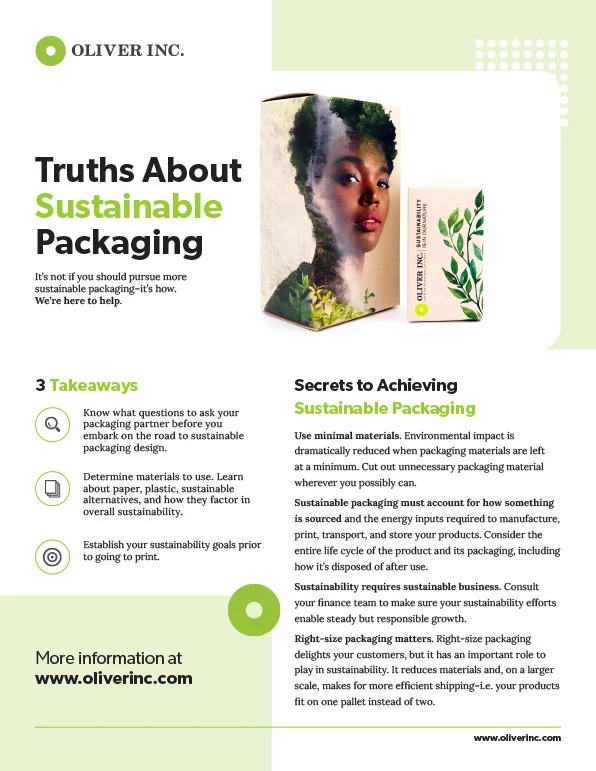Optimizing Pharmaceutical Packaging: Essential Qualities to Consider
Posted by Oliver Inc. on 19th Aug 2025
Pharmaceutical packaging – it’s not the most exciting topic at first glance, but it plays an incredibly critical role in the healthcare space. Think about it: a life-saving drug is no good if it’s compromised before it even reaches the patient.
Pharmaceutical packaging, therefore, isn’t just to make pills and supplements look nice. They also keep healthcare and pharmaceutical products safe, protected, and usable. Here’s how to optimize your packaging in the pharmaceutical industry:
Why Pharmaceutical Packaging Isn’t Just “Packaging”
It’s easy to overlook the packaging when you’re focused on what it contains. In the pharmaceutical world, though, the container is just as important as the contents. Medications are delicate: they’re sensitive to light, moisture, oxygen, and even temperature. The right packaging shields them from all of that.
In addition to preserving the quality of the drug, packaging also ensures that patients receive the correct dosage and understand how to use it. Misleading or hard-to-read packaging can lead to mistakes, and when it comes to medicine, that’s a serious issue.
Durability and Protection: The First Line of Defense
If there’s one thing that pharmaceutical packaging absolutely must do, it’s protect the product. The materials used need to be tough enough to withstand shipping, handling, and storage – sometimes in extreme conditions. A box of vaccines being transported across continents, for example, shouldn’t break or let in moisture, or the whole batch could be ruined before it gets to the intended recipients.
That’s why materials such as aluminum foil, blister packs, and high-barrier plastics are commonly used. They’re not just durable; they’re also airtight and help keep light, moisture, and contaminants out. The goal is to create a miniature fortress around each dose.
Clarity and Readability: Keeping Things Crystal Clear
Many people are familiar with the struggle of trying to read the tiny print on a medicine bottle when they’re at a pharmacy. Poor labeling can cause some very real problems. Clarity is one of the essential qualities of good pharmaceutical packaging. Labels must be easy to read, even for someone with poor eyesight.
This means clear fonts, contrasting colors, and a logical layout. The instructions on the carton or label should also be simple and direct. When you add in regulations that require specific information – expiration dates, dosage, and warnings – it becomes even more important to design packaging that communicates clearly and quickly.
Safety Features: Keeping Meds in the Right Hands
Keeping medications safe without making them impossible to open is one of the trickiest challenges of pharmaceutical packaging. On the one hand, you need to keep them away from children; on the other, you also want elderly patients who might have arthritis, for example, or other ailments that may affect grip strength, to still be able to access their pills without feeling frustrated.
Child-resistant caps and tamper-evident seals both help strike this balance. When designed thoughtfully, packaging keeps medication secure while remaining user-friendly for those who actually need it.
Sustainability: The Growing Importance of Eco-Friendly Options
To be honest, medical packaging isn’t exactly known for being environmentally-friendly. A lot of it ends up in landfills. With rising global awareness about waste and pollution, that’s a major concern. Fortunately, there’s good news – things are changing.
More and more pharmaceutical companies are now starting to explore recyclable and biodegradable packaging materials. They’re also looking into designs that make use of less plastic, or ones that can be reused. Still, it’s a tricky puzzle. The packaging still has to meet strict safety standards while reducing its environmental impact. But the industry is making progress, and it’s exciting to see green innovations becoming more common.
The Balance Between Innovation and Regulation
Of course, it’s not all about creativity alone. Pharmaceutical packaging must meet a long list of regulations. These standards are set by health authorities to ensure that every box, bottle, or blister pack is safe, consistent, and properly labeled.
So while those that design packaging can get innovative, they still need to stay firmly within the rules. It’s a balancing act, but when done well, it results in packaging that’s both effective and compliant.
Pharmaceutical Packaging, Brought to You By Oliver Inc.
Oliver Inc. is committed to being your expert partner in creating pharmaceutical packaging for your healthcare and pharmaceutical products. We have more than 250 years of experience under our belt (and counting) and are determined to innovate so that we can better serve you, the client.
We provide printing and secondary packaging for companies in markets including over-the-counter (OTC) health care, medical devices, private label, and store brands. We also make sure that our pharmaceutical packaging offerings meet rigorous standards for your peace of mind. Our quality assurance programs include GMI certification, G7® Master Qualification and G7® Process Control Master Qualification certified by Idealliance®, and PANTONE® Extended Gamut Certification.
To get in touch with us, simply fill out the contact form that can be found on our dedicated Pharmaceutical Packaging page, located here.






